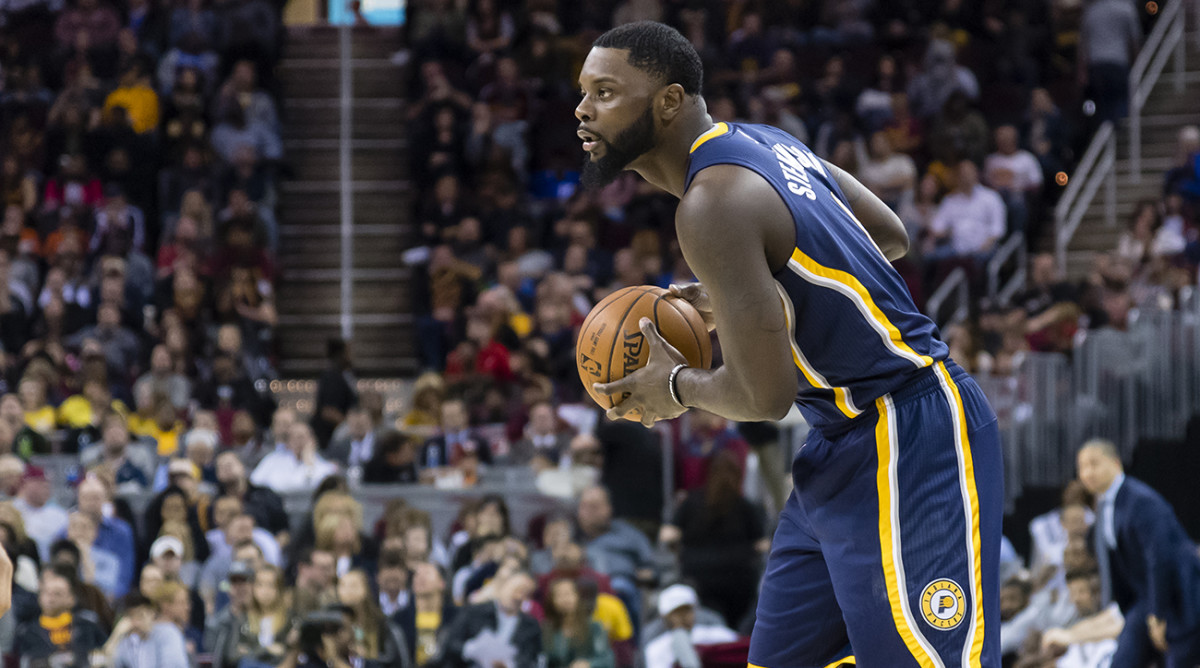Pacers Should Ride Lance Stephenson's Rollercoaster Against Cavs

Let’s start by saying every playoff series can be fickle. As often as you’ll see one team exploit a certain matchup through an entire series, you’ll see wild swings from game to game that completely destroy the best laid plans of even the most tactically inclined coaches. Having said all of that, LANCE STEPHENSON IS BACK.
Okay, okay, I needed to get that off my chest. But Playoff Lance returned in full force for the Pacers on Saturday, and he was a difference maker in what was ultimately a 109–108 loss for Indy. Stephenson was a plus-seven in the 27 minutes he played in Game 1, scoring 16 points on 8-of-13 shooting. Moving forward, Nate McMillan could be well-served by finding even more time for Stephenson on the court.
Crystal Ball: Who Will Win the 2017 NBA Finals?
There are a couple reasons why Stephenson makes sense for the Pacers. The first one has nothing to do with him. Monta Ellis is ostensibly on the court for his offense, but Indy was equally efficient on that side of the ball when Ellis sat on the bench during the regular season. The Pacers’ defense, however, was 2.3 points per 100 possession better with Ellis off the court. Indy’s most-used lineup—the one that started Saturday—had a negative net rating over the course of the season. Subbing Miles in place of Ellis improved Indy’s net rating from -0.2 to 7.7.
Stephenson brings a certain energy to the Pacers that’s very noticeable when he’s on the court. He can create his own shot, and defensively, he can guard three positions credibly thanks to his size and bullish strength. Opponents hate playing against him. Ellis, at this stage in his career, struggles at all of those things. Miles will likely be remembered for missing the game-winner on Saturday, but he played only 16 minutes, and a surface-level look at metrics shows that even he is likely a better option than Ellis, who played 28 minutes.

The issue with Stephenson is his volatility. Early in the fourth quarter of Game 1, Stephenson’s irrational confidence bordered on harmful, as his tendency to go one-on-one stalled the offense and kept the ball out of Paul George’s hands. But McMillan can’t be afraid to tinker with his rotation during the postseason, particularly with overwhelming evidence that his starting lineup could charitably be described as average for the balance of the season. It’s an extremely small sample size, but Indy had a net rating of 12.0 in the 132 minutes Stephenson played in the run up to the playoffs. It’s hard to ignore stats like that, especially when playoff games are often decided in the margins.
Of course, for the Pacers to upset the Cavs, it won’t be as simple as removing Ellis from the rotation. Indy made a lot of curious defensive choices on Saturday, particularly when it came to defending the pick-and-roll. The Pacers were committed to switching, which led to a comical number of opportunities for LeBron James to bully smaller guards in the post. It’s not a completely useless strategy—McMillan had to do something to discourage Cleveland from shooting too many threes. (The Cavs still shot 39.3% on 28 attempts from outside.) But the Pacers can’t keep giving James one-on-one matchups with Jeff Teague a few feet from the basket, help will have to come from somewhere, and defensive intensity will have to be dialed up.
NBA Playoffs Preview: First-Round Tests Await For Cavs And Celtics
If I’m McMillan, I’m kicking myself after Game 1. Cleveland’s defense is so bad the Pacers should be able to hang around in much of these series. But in a game that literally came down to one possession, each minute of action was precious. The Pacers’ failure to maximize the use of their best lineups could very well have cost them dearly on Saturday.
